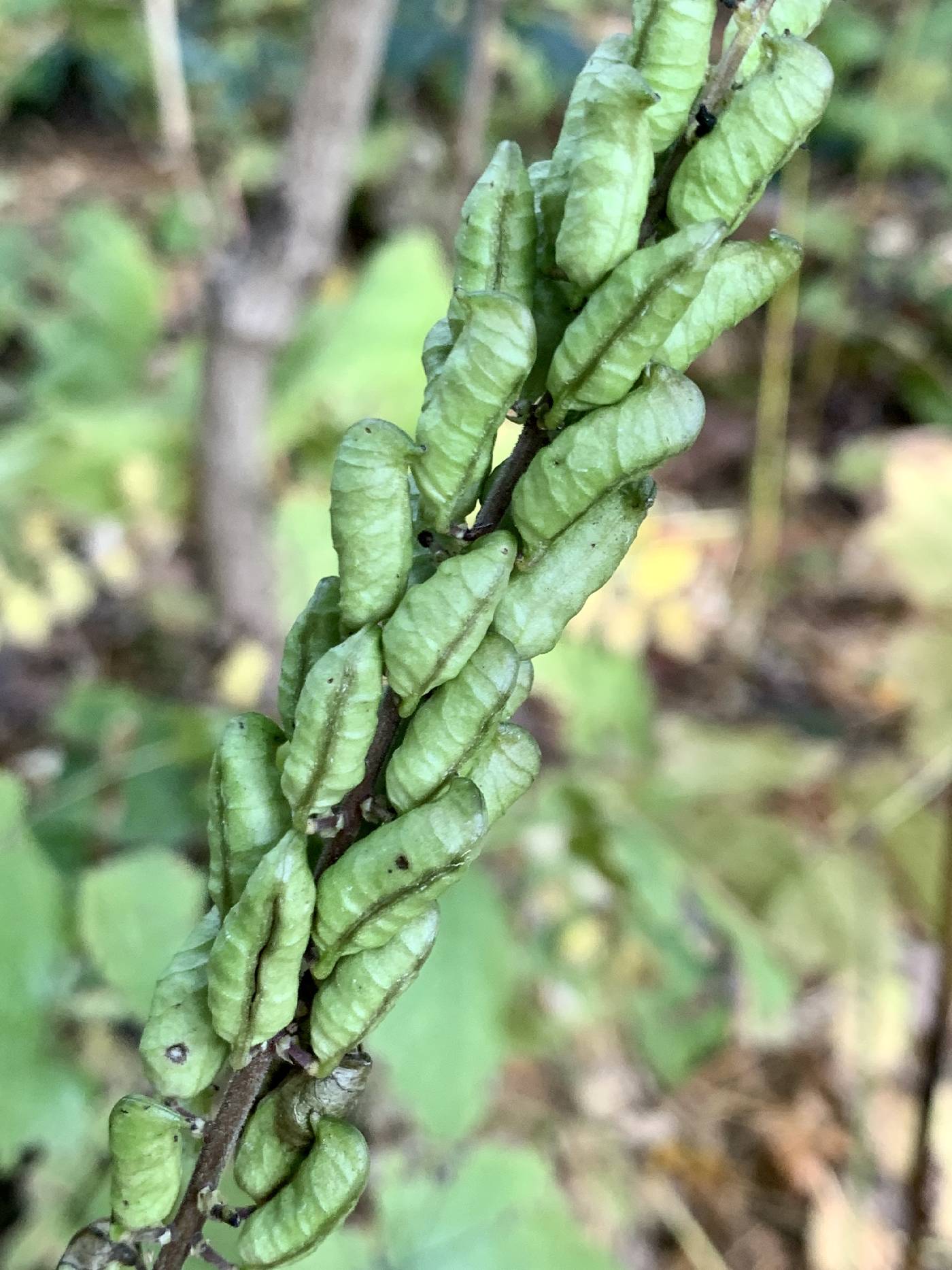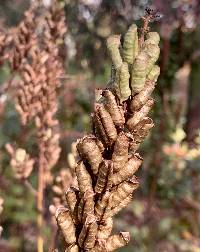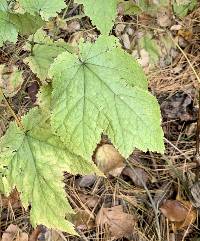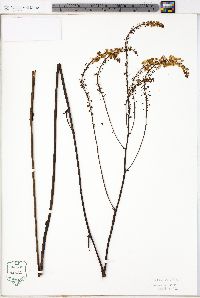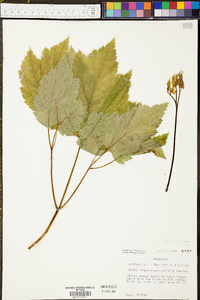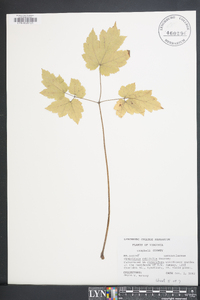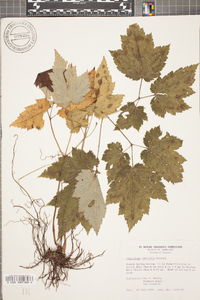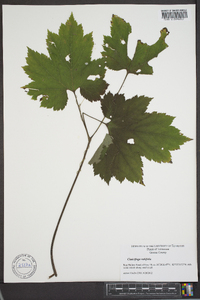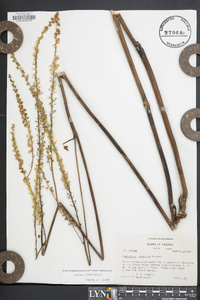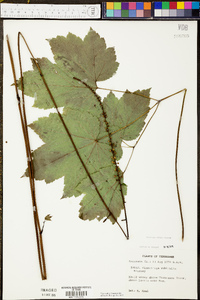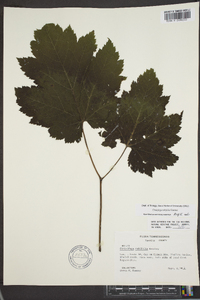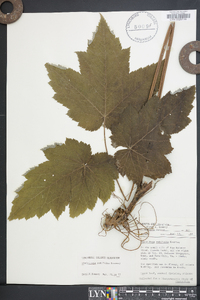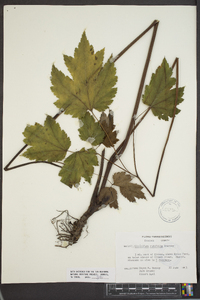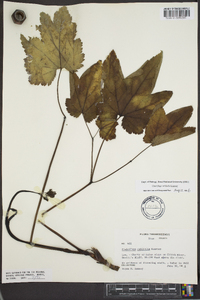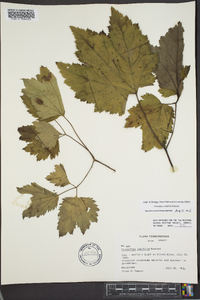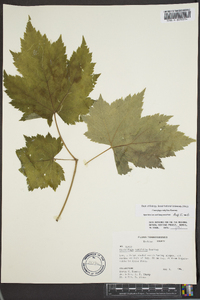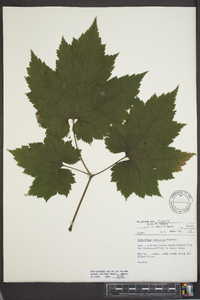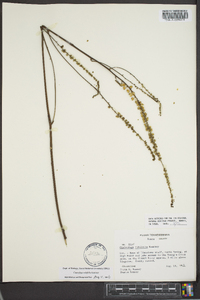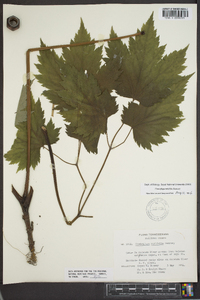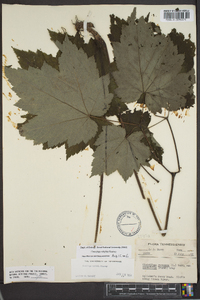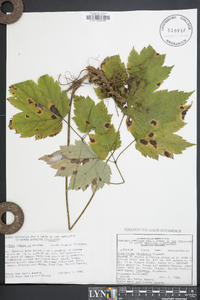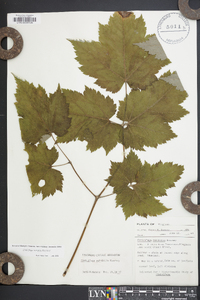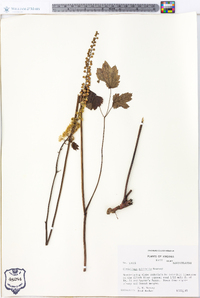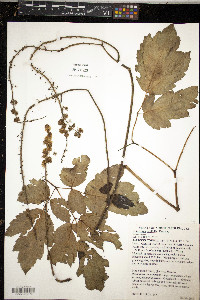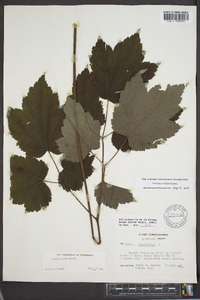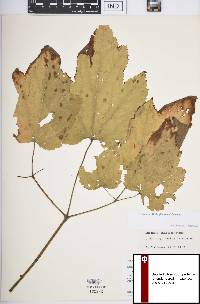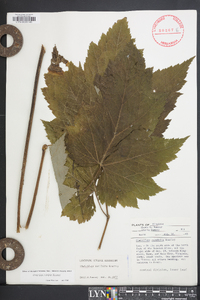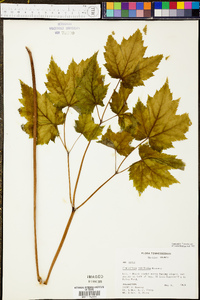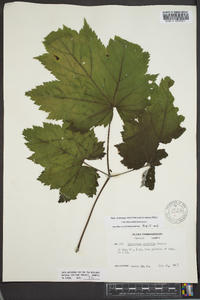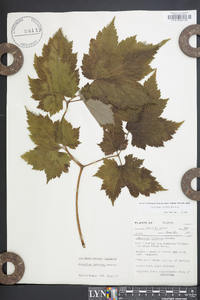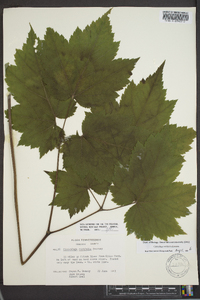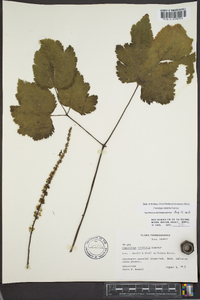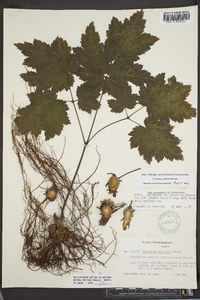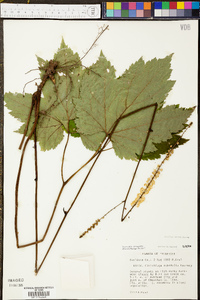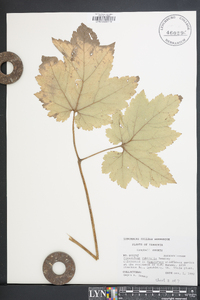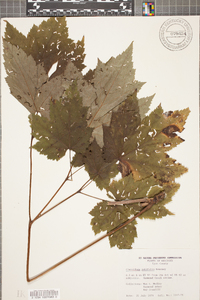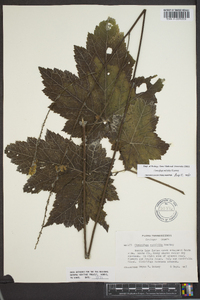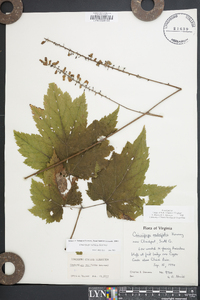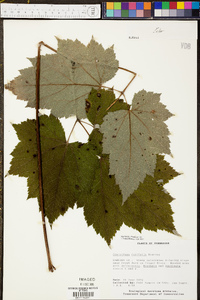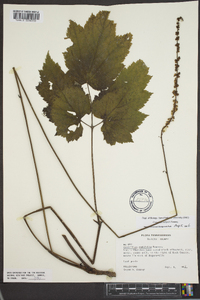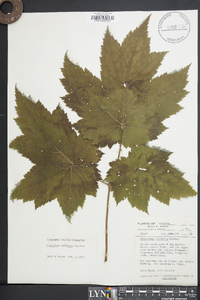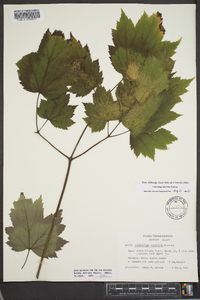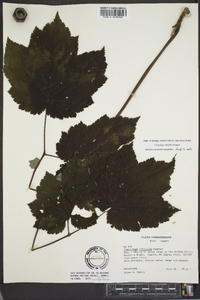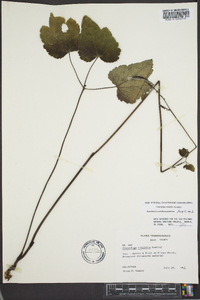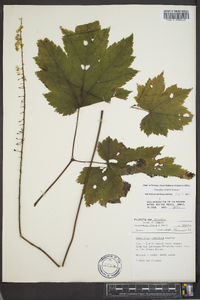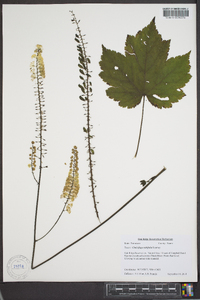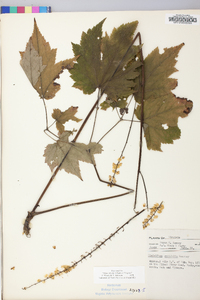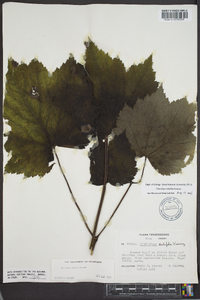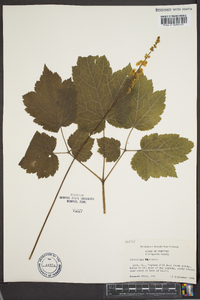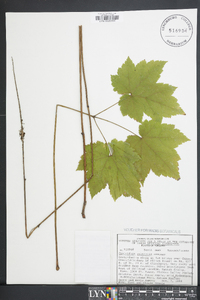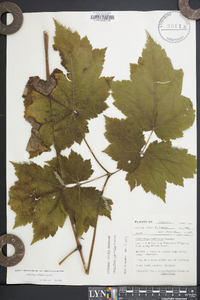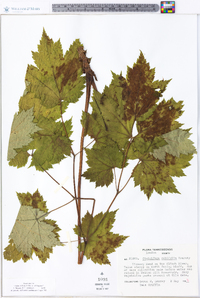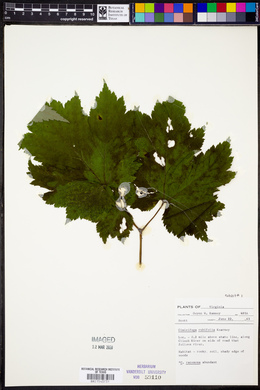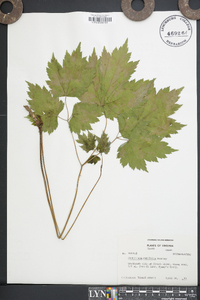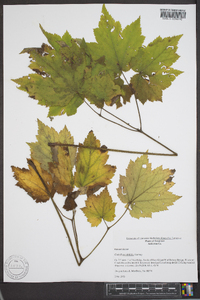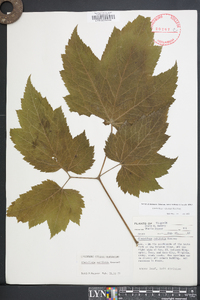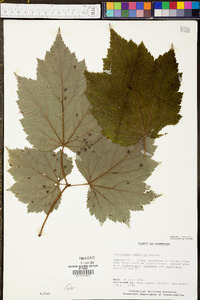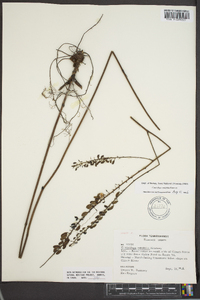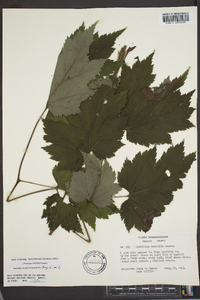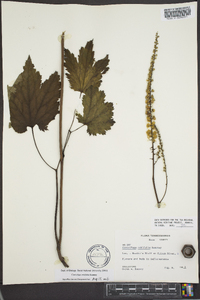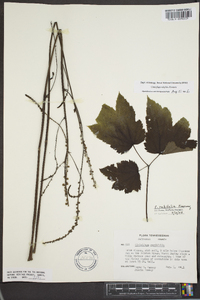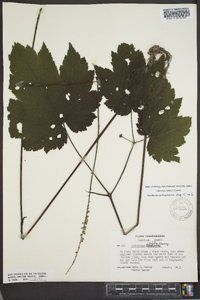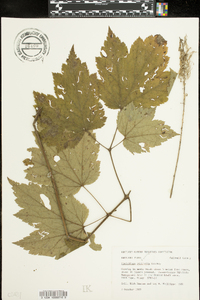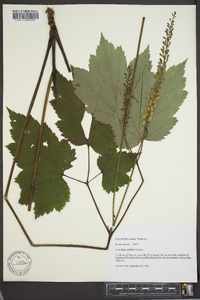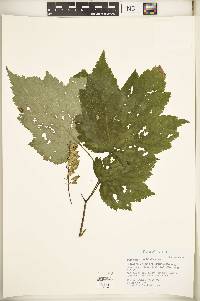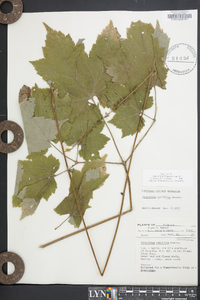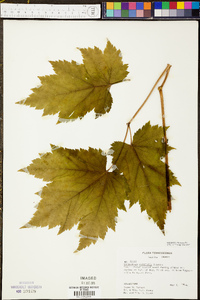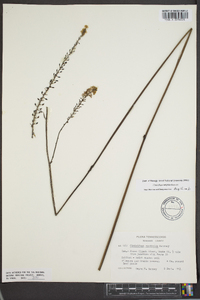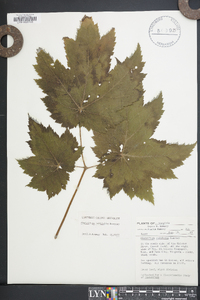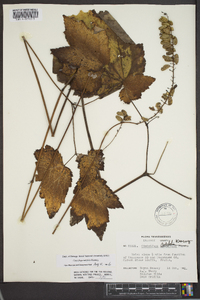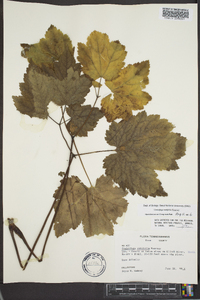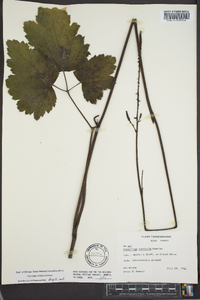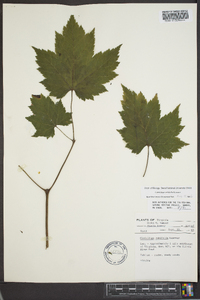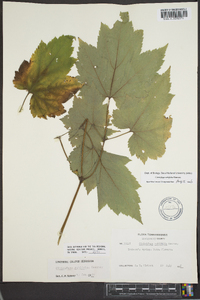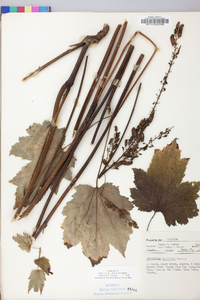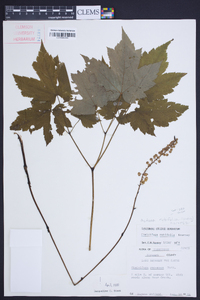
|
|
|
|
Family: Ranunculaceae
Appalachian Bugbane
[Cimicifuga rubifolia Kearney] |
Stems 30-140 cm, glabrous. Leaves: petiole angled, 20-50 cm, proximally deeply grooved adaxially, densely pubescent in groove, otherwise glabrous or sparsely pubescent. Leaf blade 1-2-ternately compound; leaflets 3-9(-17); terminal leaflet of central segments broadly obovate, deeply 3-5-lobed, 9-30 × 9-25 cm, with 5-9 prominent veins arising basally, base deeply cordate, margins coarsely and irregularly dentate, apex sharply acuminate, surfaces abaxially with long, appressed, delicate hairs, adaxially glabrous; other leaflets 8-24 × 6-22 cm. Inflorescences erect panicles of 2-6 racemelike branches, terminal raceme 15-30 cm, puberulent to short-pubescent; bracts 3, subtending pedicel, central bract larger, lanceolate, 2 mm, lateral bracts ovate-deltate; pedicel to 5 mm, short-pubescent, bracteoles absent. Flowers: sepals 5, white; petals absent; stamens 35-65; filaments 3-5 mm; pistils 1(-2), sessile, sparsely glandular; style short, straight or slightly recurved; stigma minute, 0.2-0.3 mm wide. Follicles 1(-2), sessile, oblong, strongly compressed laterally, 8-20 mm, thin walled. Seeds reddish brown, lenticular, covering of scales giving cylindric appearance, ca. 3 mm, covered with reddish brown, membranous scales. 2 n = 16. Flowering summer-fall (Aug-Oct). North-facing, limestone talus slopes and river bluffs, ravines, and coves, and along rivers and creeks; 300-900 m; Ala., Ill., Ind., Ky., Tenn., Va. In addition to being found in the Ridge and Valley Province of Tennessee and Virginia, Cimicifuga rubifolia has disjunct populations in Alabama, the lower Ohio River Valley, and in the middle Tennessee counties of Davidson, Montgomery, and Stewart. The name Cimicifuga racemosa var. cordifolia has been misapplied to C . rubifolia . See discussion of C . cordifolia under C . americana .
Plant seldom over 1.5 m; lvs with mostly 3-9(-15) lfls, typically ternate with the lateral segments but not the terminal one again ternate, the lfls relatively large, mostly 1-2.5 dm long and wide, cordate at the base; pedicels bibracteolate at the base (in addition to the small subtending bract); staminodes none; follicle 8-15 mm; seeds covered with chaffy scales; otherwise much like no. 1 [Cimicifuga racemosa (L.) Nutt.]. Cool mt. woods, uncommon; sw. Va. to N.C. and Tenn.; disjunct in w. Ky. and s. Ill. (Aug.) Sept. (C. racemosa var. cordifolia, misapplied) Gleason, Henry A. & Cronquist, Arthur J. 1991. Manual of vascular plants of northeastern United States and adjacent Canada. lxxv + 910 pp. ©The New York Botanical Garden. All rights reserved. Used by permission. Plant seldom over 1.5 m; lvs with mostly 3-9(-15) lfls, typically ternate with the lateral segments but not the terminal one again ternate, the lfls relatively large, mostly 1-2.5 dm long and wide, cordate at the base; pedicels bibracteolate at the base (in addition to the small subtending bract); staminodes none; follicle 8-15 mm; seeds covered with chaffy scales; otherwise much like no. 1 [Cimicifuga racemosa (L.) Nutt.]. Cool mt. woods, uncommon; sw. Va. to N.C. and Tenn.; disjunct in w. Ky. and s. Ill. (Aug.) Sept. (C. racemosa var. cordifolia, misapplied) Gleason, Henry A. & Cronquist, Arthur J. 1991. Manual of vascular plants of northeastern United States and adjacent Canada. lxxv + 910 pp. ©The New York Botanical Garden. All rights reserved. Used by permission. From Flora of Indiana (1940) by Charles C. Deam Indiana Coefficient of Conservatism: C = 10 Wetland Indicator Status: n/a |
This project was made possible in part by the Institute of Museum and Library Services [MG-70-19-0057-19].
Powered by Symbiota

